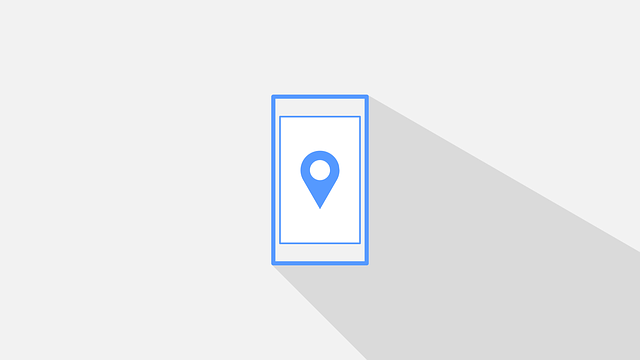There’s no question that Google is the primary focus when optimizing for SEO.
That said, it should not be the only focus. Bing, Yahoo, and Baidu all have millions of users.
These “secondary” search engines are often overlooked because of low market share.
Consider this; Bing powers not only its own searches but Yahoo as well.
When combined, that equals a 10.4% U.S. market share. On the surface that may seem small, but actually represents millions of search engine queries (which are largely being ignored by marketers).

With that in mind, here are eight tips to help you optimize your site for Bing.
1. Use Bing Places
Bing Places is Microsoft’s version of Google My Business.
The goal is the same – to deliver the best local search results possible.
One way that Bing does this is by rewarding websites that prominently feature their location details.
Another key difference: unlike Google, the Bing algorithm takes into consideration social signals from third party sources, like Facebook for local rankings.
Adding Your Business to Bing Places
Even if you’ve never used Bing before, there’s a good chance that your business has automatically been listed.
If so, then you can claim the business as yours and make any modifications necessary.
If you can’t find a listing for your business, you can add it by following Bing’s instructions here.
Verification
The next step of the process is verification.
Bing Places will need to send you an authorization code to get you verified so that no one can make unauthorized changes of your business listings.
You can be verified via text message, phone call, email or post.
Publishing Your Business
Following verification, your business will automatically be published by Bing.
2. Incorporate Pictures
Bing values high-quality images and they’re great from a user’s perspective.
A picture can be of your premises or your work.
Just remember that images are all about creating a lasting impression and encouraging prospects to click through to your site.
3. Get Reviews
Online reviews are your digital currency. Today, everyone looks for a review before acting.
Always encourage customers to leave an honest review about their experience.
Do not succumb to the urge to buy or create fake reviews.
One hundred 5-star reviews with absolutely no flaws look more than a little suspicious.
An occasional “less than favorable” review, increases your credibility. Plus, it’s a great source of feedback for your business, potentially identifying problems previously unknown and offering you a chance to fix them.
4. Use Social Media
The Bing algorithm incorporates social signals to judge the quality of content, which in turn, affects rankings. Make sure you have a social presence.
Facebook and Twitter are great for almost everyone. Beyond that, it’s important to be where others in your vertical are social.
For example, Instagram and Pinterest may be great for a wedding photographer or interior designer, but a waste of time for a personal injury attorney.
The more social shares (signals) you get, the better chance you have that your site will rank higher on Bing.
Once again – avoid any urges to buy followers or likes.
Don’t outsource your social media. In order for social media to work, it needs a genuine voice that only a business owner or stakeholder can provide.
5. Use Old School On-Page Optimization Techniques
The Bing algorithm is widely considered to be less sophisticated than Googles’ and thought to rely more on matching keywords to queries.
Think Google, prior to the introduction of Hummingbird and Knowledge Graph.
Using keywords for titles (H1) and subheadings (H2) as well as in the opening paragraph still seems to move the dial in Bing SERPs.
The same goes for including specific keywords in your text and “gasp” paying attention to keyword density.
Here’s where things get a little dicey.
By optimizing for Bing, you could potentially hurt your Google SERPs because of the differences in the algorithms. That’s why Bing is largely ignored.
6. Tags & Categories Are Important, Too
Tags and categories make your site more discoverable to those who are specific with their search terms.
If your website uses a CMS such as WordPress, it’s simple to add tags and categories to every page of your site, not just blog posts.
In the tags section of WordPress sites, you will be able to add a brief description to each of your pages, which is the perfect place to squeeze in your main, local specific keyword.
The slug is what you see in the URL after the main address (for example, mysite.com/this-is-a-slug). It will be used by Bing’s search engine algorithms to list you in SERPs.
7. Use Old School Link Building Techniques
Bing’s stated view on inbound links is similar to Google’s.
According to their webmaster guidelines.
“Links pointing to your site help Bing discover new pages on your site. It also, traditionally, is regarded as a signal of popularity. The site linking to your content is essentially telling Bing they trust your content. As a result, Bing rewards links that have grown organically, that is, that have been added over time by content creators on other trusted, relevant websites made to drive real users from their site to your site. Abusive tactics that aim to inflate the number and nature of inbound links such as links buying, participating in link schemes (link farms, link spamming and excessive link manipulation) can lead to your site being delisted from the Bing index.”
That said, it is widely believed that link quantity still moves the needle at Bing – perhaps more so than link quality.
It also appears that exact match anchor text links carry more weight in Bing than Google.
A word of caution – going too heavy on low value and/or exact match anchor text (EMAT) links is almost certain to raise a red flag at Google.
8. Speed Up Your Site
Your page load time will have a direct impact on user experience.
You can check your page load time by using the Bing Webmaster Tools.
If your site isn’t as fast as it could be, it will give you options on how to improve it such as using less JavaScript, compressing images, and minifying CSS.
Conclusion
Despite the low percentage of market share as compared to Google, Bing, and Yahoo still account for millions of searches every single day.
The savvy search marketer will look for opportunities to capture a share of that market.
Because the two algorithms work in distinctly different ways, there are perils involved in optimizing for Bing, so a delicate balance is required for success.
More Resources:
- Bing Shares 5 Algo Insights
- Why & How Bing Plans to Improve Its Crawler, Bingbot
- How to Build Links for Bing vs. Google
Image Credits
Featured Image: gregroose / Pixabay
In-Post Image: krzysztof-m / Pixabay





